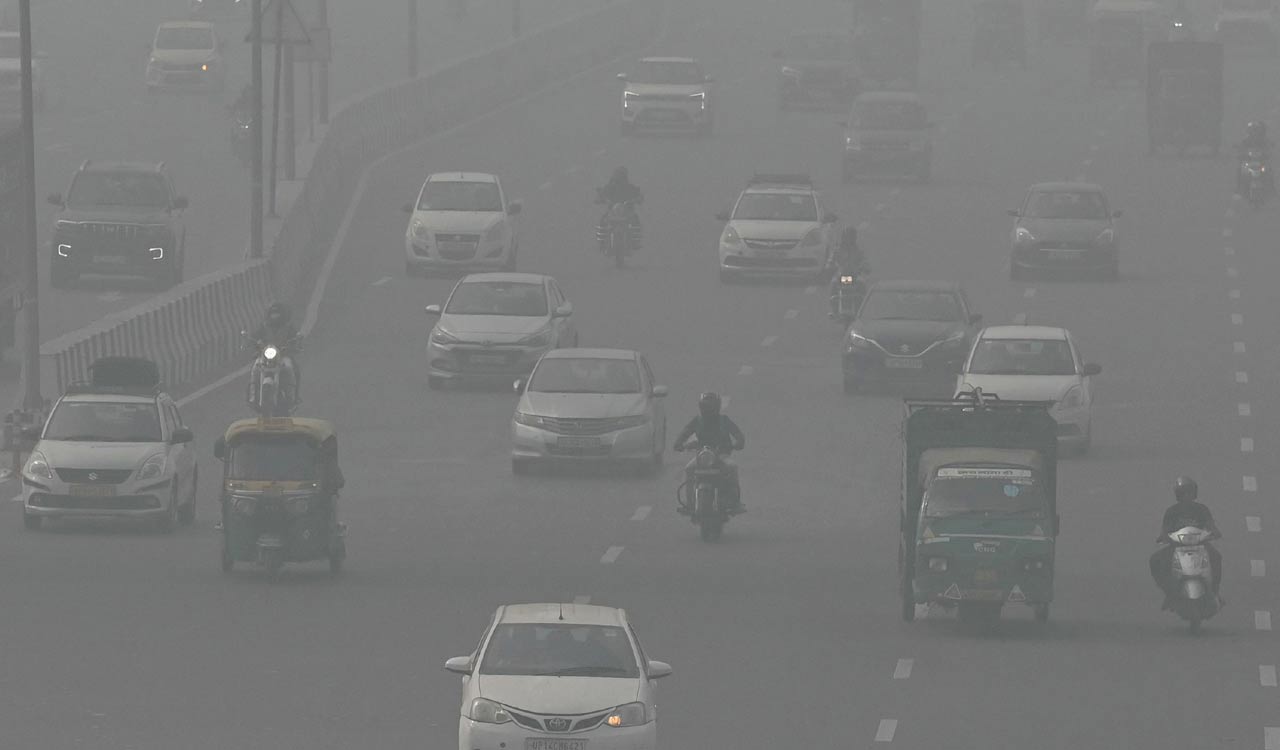Delhi has been blanketed by toxic haze with the concentration of poisonous PM2.5 more than 80 times the healthy limit prescribed by WHO
Published Date – 11:45 PM, Sun – 5 November 23

Commuters make their way along a road amid heavy smoggy conditions in New Delhi on November 5, 2023. (Photo by Arun SANKAR / AFP)
Sri Lankan and Bangladeshi cricketers cancelling their practice sessions for the World Cup matches due to toxic pollution levels in New Delhi is a sad commentary on the host country’s state of affairs. While the recommended Air Quality Index (AQI) for any healthy person is 50 and below, the national capital has crossed 470, a level that makes the city’s air unbreathable and could prove fatal for those suffering from lung-related diseases and even poses a risk of lung cancer. The pathetic conditions speak volumes about the abject failure of the government in mitigating the pollution crisis. Carrying a dubious distinction of the world’s most polluted city, Delhi has been blanketed by toxic haze with the concentration of poisonous PM2.5 (Particulate Matter of 2.5 microns in diameter) has crossed 360, more than 80 times the healthy limit prescribed by the World Health Organization (WHO). The suffocating weather conditions caused by the cumulative effect of dust-producing construction work, vehicular emissions and stubble burning, along with slow wind movement, have, unfortunately, become an annual affair. The fact that one in every three children in Delhi is battling asthma or airflow obstruction due to air pollution should ring alarm bells in the government corridors. There is no excuse for the gradual depletion of green cover in the national capital, which is depriving the residents of clean air. Though the Commission for Air Quality Management (CAQM) in the National Capital Region is tasked with devising and executing plans to prevent and control air pollution in the region, the enforcement leaves a lot to be desired.
Overall, the northern States have been feeling the sting of air pollution with a spike in cases of asthma, cough, watery eyes and breathing problems. The pollution crisis should be addressed at two levels — long-term year-around measures and short-term ones related to traffic, construction and stubble burning. However, the response of the Delhi and central governments has been inadequate and patchy. What is distressing is that the political class appears to be unaware of the long-term consequences of the pollution crisis. It is time ecological concerns become part of the political discourse and party manifestos. The pollution crisis is not just confined to Delhi but is a nationwide phenomenon. None of the Indian cities meet the prescribed WHO standards of air quality. Some of the major challenges in tackling air pollution in the country are weak enforcement and compliance of existing regulations and standards that can prevent polluting activities, inadequate financing and incentives for clean technologies, lack of proper research and innovation, low public awareness and mushrooming of unregulated small-scale industries without proper environmental permits or controls. There is a need to develop and promote low-carbon technologies such as solar panels, hydrogen fuel cells, wind turbines, biogas plants and electric vehicles that can reduce the dependence on fossil fuels.





